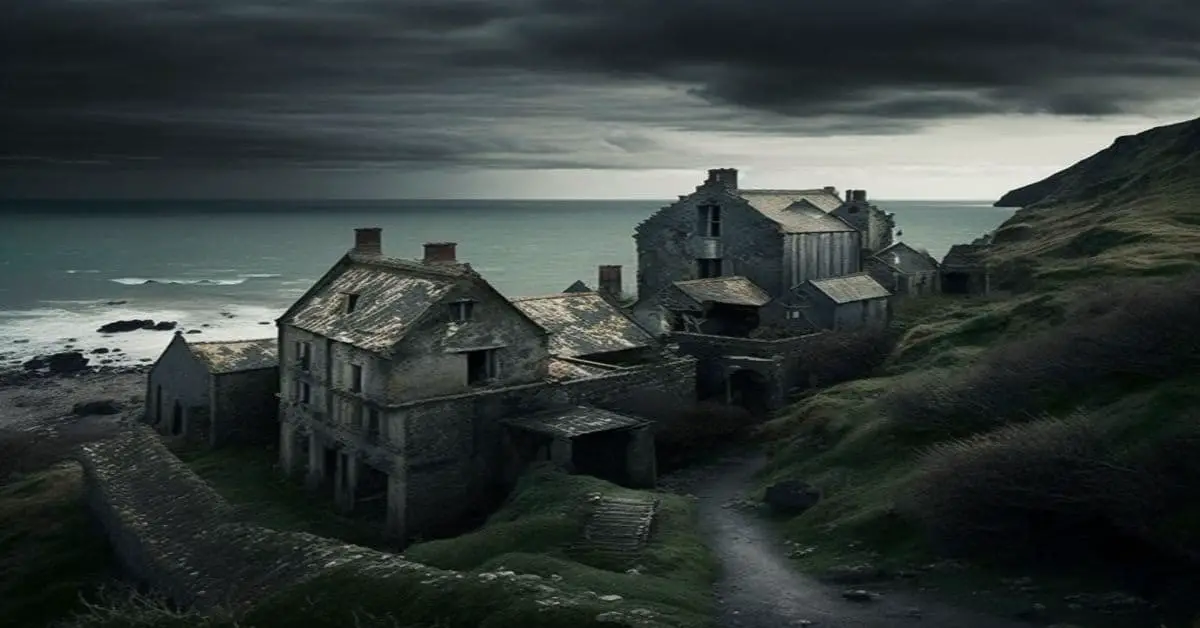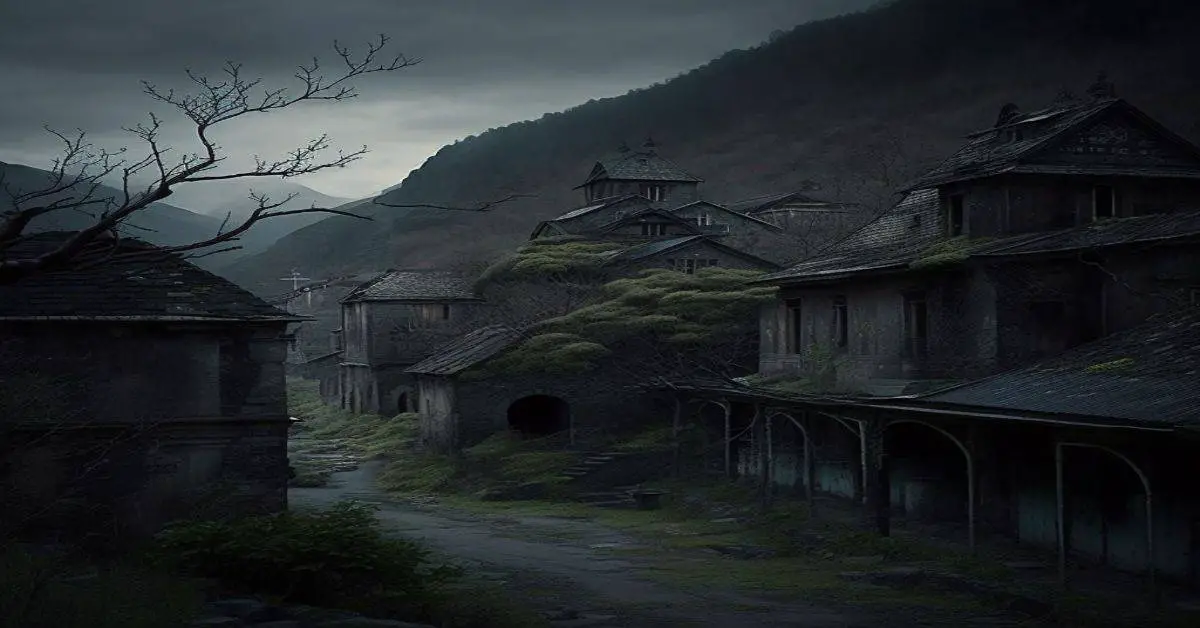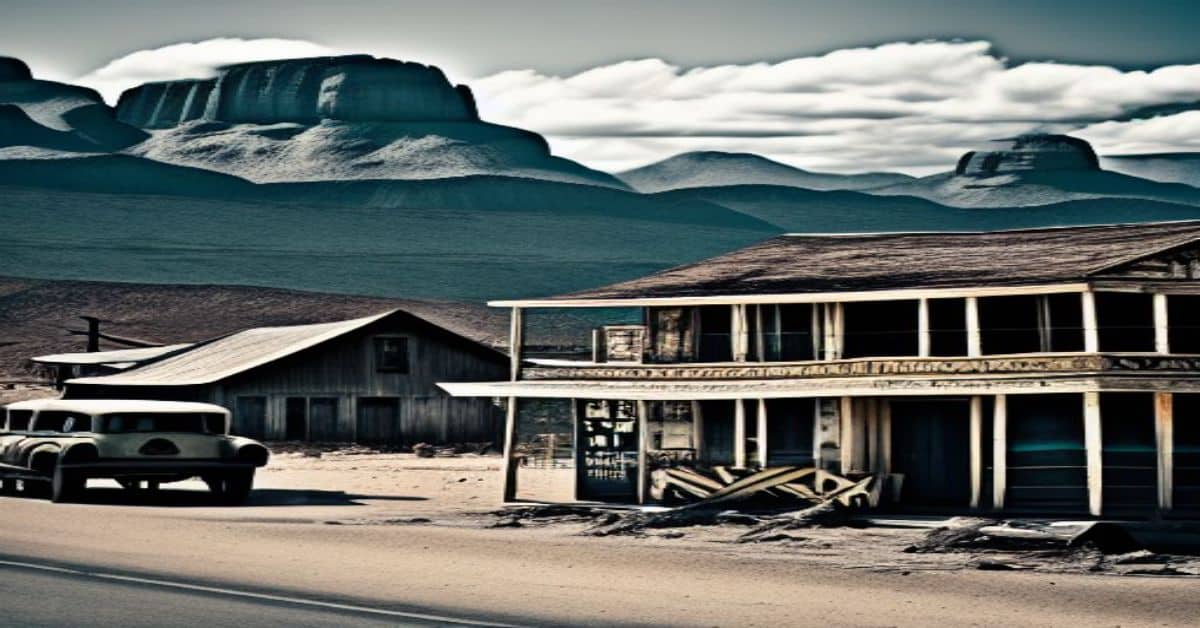Nestled in the arid landscape of Sandavol County, New Mexico lies the abandoned town of Cabezon. This once-thriving community served as a hub for farming, sheep raising, and stagecoach travel in the late 1800s.
Despite its current decay, the town still stands as a testament to the resilience and perseverance of its former residents, who weathered the challenges of drought, economic decline, and isolation.
For those with an appreciation for history and the allure of ghost towns, Cabezon offers a unique glimpse into the past, a chance to explore a place frozen in time.
While the town’s decline was triggered by the drying up of Rio Puerco in the 1940s, Cabezon remains almost entirely intact today, consisting of about 15 buildings, including an old church, cemetery, and main street.
Although located on private property with no trespassing signs posted, the abandoned charm of Cabezon is worth discovering for those who seek to understand the impact of changing landscapes and economic forces on rural communities.
In this article, we will delve into the history and remains of Cabezon, highlighting its prominent citizens and exploring the accessibility of this classic ghost town for curious visitors.
Key Takeaways
- Cabezon was established in the 1870s as a farming and sheep raising community.
- The town declined in the 1940s when the Rio Puerco dried up and the post office closed in 1949.
- Cabezon’s remains include about 15 buildings, located on private property with no trespassing signs posted.
- Richard Heller, who operated the Heller Store and post office for many years, made significant contributions to the town and is still recognized today.
Location and History
Located about six miles east of highway 44 and northwest of San Ysidro, Cabezon was established in the 1870s as a farming and sheep raising community and a stage stop between Santa Fe and Fort Wingate.
The town prospered for several decades until its decline in the 1940s, when the Rio Puerco dried up, leaving the town without the water it needed to sustain itself.
The post office officially closed in 1949, and the town became a classic ghost town, its remains including a cemetery, old church, main street, and about 15 buildings.
Today, it is a remarkable testament to the impermanence of human settlements in the face of nature’s unrelenting forces.
Cabezon’s climate is hot and dusty during the summers and mild in the winters.
The best time to visit would be during the cooler months, as the heat can be quite intense during the summer.
It is also worth noting that the town is located on private property with no trespassing signs posted, so visitors should respect the property rights of the landowners and avoid visiting during rainy weather, as the roads can become impassable.
Despite these restrictions, Cabezon offers a unique glimpse into the history of the American West and the resilience of the people who once called it home.
“If you’re tooling around the Rio Puerco Valley northwest of Albuquerque, one feature will loom in the distance, possibly beckoning you to come closer (or even climb it), and that’s Cabezon Peak, a volcanic plug left after the erosion of a larger cinder cone. This feature was known as Wasema’a to the Jemez. To the Isletans it was Tchi’kuienad. The Navajo called it Tsenajin, or Black Peak. For them, it represented the head of a giant that had been killed on Mount Taylor, a sacred place, by the Twin Brothers, or War Gods. The lava at the base of the peak then was the giant’s blood.”
https://cityofdust.blogspot.com/2023/09/beneath-giants-head-cabezon-new-mexico.html
Prominent Citizens
One noteworthy figure in the history of Cabezon was Richard Heller, who operated the Heller Store and post office for many years. Heller was a prominent town citizen and played a significant role in its development.
His store served as a hub for the community, providing essential goods and services to the residents of Cabezon. Heller’s impact on the town was significant, as he not only operated the store but was also responsible for managing the local post office.
The post office was a vital link to the outside world, and Heller ensured that it ran efficiently, delivering mail and packages to the residents of Cabezon. Today, Heller is remembered as one of the notable figures in Cabezon’s history, and his contributions to the town are still recognized and celebrated.
Remains and Access
Accessing the remains of the once-thriving community in Cabezon is prohibited due to private property and no trespassing signs. Still, it’s heartbreaking to know that a piece of history is inaccessible to the public.
The ghost town is almost a complete classic and it’s a shame that people can’t explore the ruins and see what’s left of the old church, cemetery, main street, and other buildings.
The private property restrictions have kept the town’s history preserved, but it’s a loss for those interested in history and architecture.
Despite the restrictions, the town is still visible from the base of Cabezon Peak and is a reminder of what once was.
The climate is hot and dusty during summers, while winters are mild. It’s best to avoid visiting during rainy season.
The town’s decline was due to the drying up of Rio Puerco in the 1940s and the post office officially closed in 1949.
Even though the town is now inaccessible, its history and prominence in the past can still be appreciated from afar.
Frequently Asked Questions
What caused the Rio Puerco to dry up in the 1940s and how did it impact the town of Cabezon?
The Rio Puerco dried up in the 1940s due to natural and human-caused environmental factors. The impact on Cabezon, a former farming and sheep-raising town, was significant as its water source disappeared, contributing to its eventual decline. A historical perspective reveals the interconnectedness of environmental factors and community sustainability.
Are there any legends or ghost stories associated with the town of Cabezon?
Local folklore suggests the presence of supernatural sightings in Cabezon, a ghost town in New Mexico. However, there is no concrete evidence to support these claims, and they remain as mere legends.
What is the current ownership status of the private property where Cabezon is located and is there any possibility of public access in the future?
The current ownership status of the private property where Cabezon is located is unknown, but the presence of no trespassing signs suggests private ownership. There is no indication of any public access possibilities at this time.
Are there any notable architectural or cultural features of the buildings in Cabezon, such as unique building materials or artistic elements?
What unique architectural and cultural features can be found in the buildings of Cabezon, a ghost town with historical significance? The town boasts of almost a complete classic ghost town with about 15 buildings, including an old church, cemetery, and main street, constructed from unique building materials and artistic elements.
Have any archaeological excavations or studies been conducted in Cabezon, and if so, what have they revealed about the town’s history and culture?
Cabezon’s excavations have revealed cultural significance, including evidence of early Spanish occupation and Native American settlements. Finds include artifacts such as pottery, beads, and arrowheads, shedding light on the town’s history and culture.


